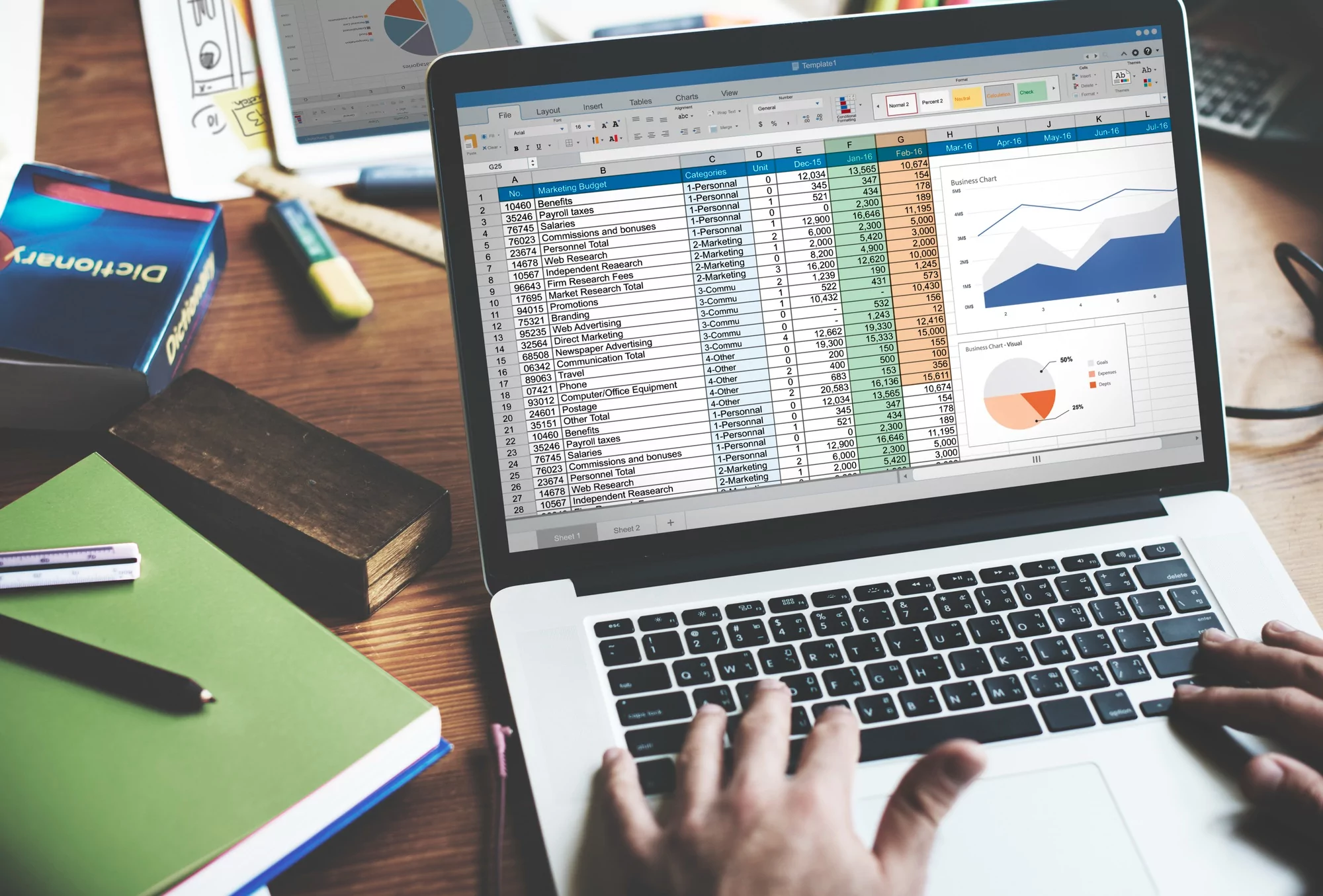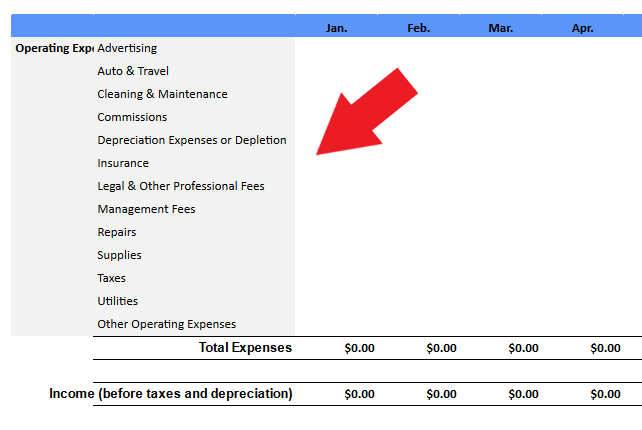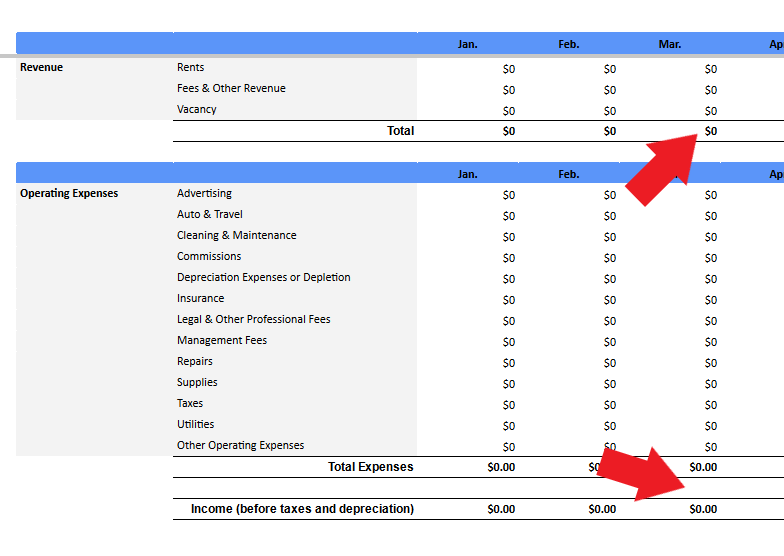

Regardless of your real estate portfolio size, having a comprehensive and organized rental property expenses spreadsheet is non-negotiable. This step-by-step guide outlines how to create a spreadsheet for rental property expenses (maintenance, utility bills, etc.), why real estate investors use spreadsheets, and reasons to upgrade to property management software.
Automatically track and categorize transactions for each property and Schedule E category.
Follow the simple instructions outlined below to create and use a real estate expense spreadsheet to help keep your rental property finances in check.
We’ve also created a basic rental property expense worksheet template as a source of inspiration to get started with tracking expenses.
Open a spreadsheet program like Microsoft Excel or Google Sheets to create a rental property expenses spreadsheet.

Set up a section at the top of your spreadsheet to input rental property information, including:
Write all the relevant information to easily identify and reference the investment property.
Create a section below the property information to track rental income with columns for:
This section helps track rent payments, monitor cash flow, and identify any outstanding or late monthly rent payments.
Once you enter the income amounts, use the “=SUM()” function to calculate the totals automatically. Type “=SUM” and select the range of cells containing the income amounts in brackets. For example, if your income is listed in column D (starting from row 2 to row 10), you would enter “=SUM(D2:D10)” .
(It’s already done for you in Baselane’s spreadsheet.)

Create a section to record monthly expenses with columns for the rental property.
Common monthly expense categories include:

This section helps keep track of a wide variety of regular rental property management expenses.
Update the property management spreadsheet with new rental property income and expenses as they occur. Set a schedule to review and analyze the spreadsheet on a monthly basis.

Property owners, landlords, and real estate investors who regularly monitor rental property finances can identify trends and make informed decisions for real estate investing.
Using a property management software tool with automated accounting features like Baselane can help streamline rental finances, landlord banking, and rental property bookkeeping all in one place.
For tips on a smooth transition from spreadsheets to landlord software, check out our blog post here.
Learn how separate accounts can simplify your expense tracking and taxes.
Spreadsheets come with their own challenges, including the risk of errors, lack of automation, and limited accessibility. Upgrading to property management software like Baselane can save time and money with automated accounting, accurate bookkeeping, and scalable expense tracking for unlimited rental properties.
Share this article: Link Copied! In this article:
90 Fifth Ave, Floor 10, New York, NY 10011
For support & inquiries For a guaranteed and prompt response: Or email us at support@baselane.com For urgent inquiries: Call us at: +1 (888) 586-1618 Mon-Fri 9AM-4PM EST© 2024, Skylight Financial Services Inc. (Baselane). All Rights Reserved.
Baselane is a financial technology company and is not a bank. Banking services provided by Thread Bank, Member FDIC. FDIC insurance is available for funds on deposit through Thread Bank, Member FDIC. The Baselane Visa Debit Card is issued by Thread Bank, pursuant to a license from Visa U.S.A. Inc. and may be used everywhere Visa is accepted.
1 Your deposits qualify for up to $3,000,000 in FDIC insurance coverage when placed at program banks in the Thread Bank deposit sweep program. Your deposits at each program bank become eligible for FDIC insurance up to $250,000 , inclusive of any other deposits you may already hold at the bank in the same ownership capacity. You can access the terms and conditions of the sweep program at https://go.thread.bank/sweepdisclosure and a list of program banks at https://go.thread.bank/programbanks. Please contact customerservice@thread.bank with questions on the sweep program.
2 The Annual Percentage Yield (APY) on your Savings Account is accurate as of 04/05/23. Total balances across Checking Accounts and Savings Accounts are used to calculate APY tier, but only money in Savings Accounts is eligible for interest. Total balances less than $10,000 earn 1.95% APY for Savings Accounts. Total balances between $10,000 and $24,999 earn 2.93% APY for Savings Accounts. Total Balances between $25,000 and $49,999 earn 3.40% APY for Savings Accounts. Total balances of $50,000 or more earn 4.19% APY for Savings Accounts. These are variable rates and are subject to change based on the target range of the Federal Funds rate. There are no minimum balances or minimum deposits required to earn interest on your Savings Account. Review the Baselane Business Deposit Account Agreement for more information.
3 Cash back is credited once per month for all rewards above 1% and credited to your account with a maximum of $2,000 annual spend per calendar year. 1% cash back is credited instantly following purchase with no maximum spend. No minimum spend applies. Terms and conditions apply.
4 Some states require an interest-bearing escrow account for security deposits while some don’t require interest. User is responsible to check state laws along with rules for collecting and reimbursing a refundable security deposit. A brief overview of security deposit laws for escrow accounts in all 50 states can be found here.
*All testimonials, reviews, opinions or case studies presented on our website may not be indicative of all customers. Results may vary and customers agree to proceed at their own risk.